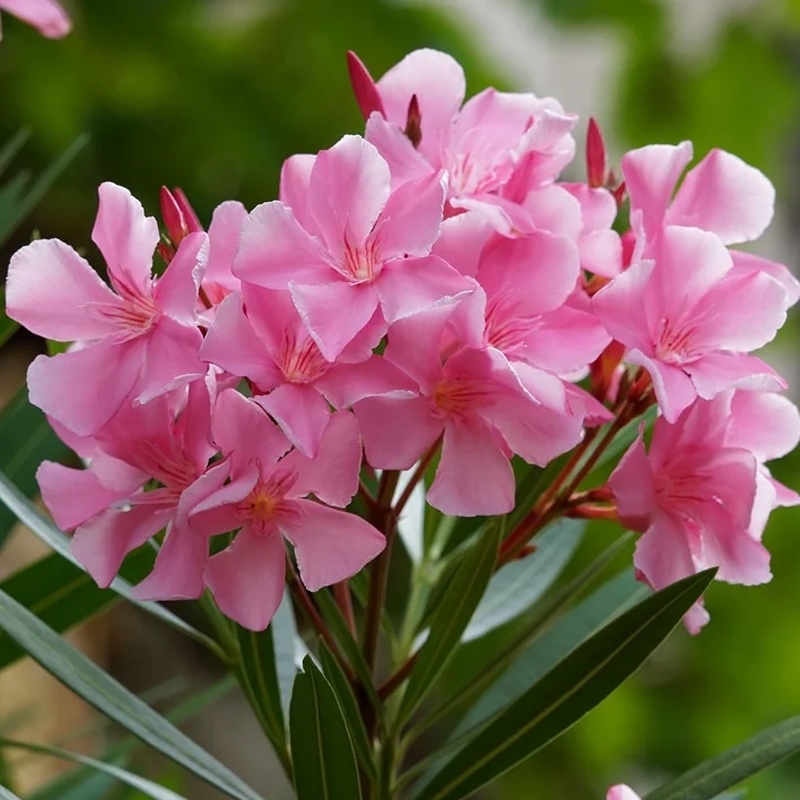

We may earn revenue from the products available on this page and participate in affiliate programs. Learn More ›
Some “dangerous” plants are obviously sinister, popping up and invading an entire landscape, even choking out native plants nearby. Others are more discreet, and release compounds from their roots that suppress or kill nearby plants. Still others wait for the curious pet (or person) to take a bite before unleashing its life-threatening assault. Before you buy greens and flowers for your property, find out if they are among the most dangerous plants and how to cut the risk to people, pets, or other plants.
1. Burning Bush (Euonymus alatus)
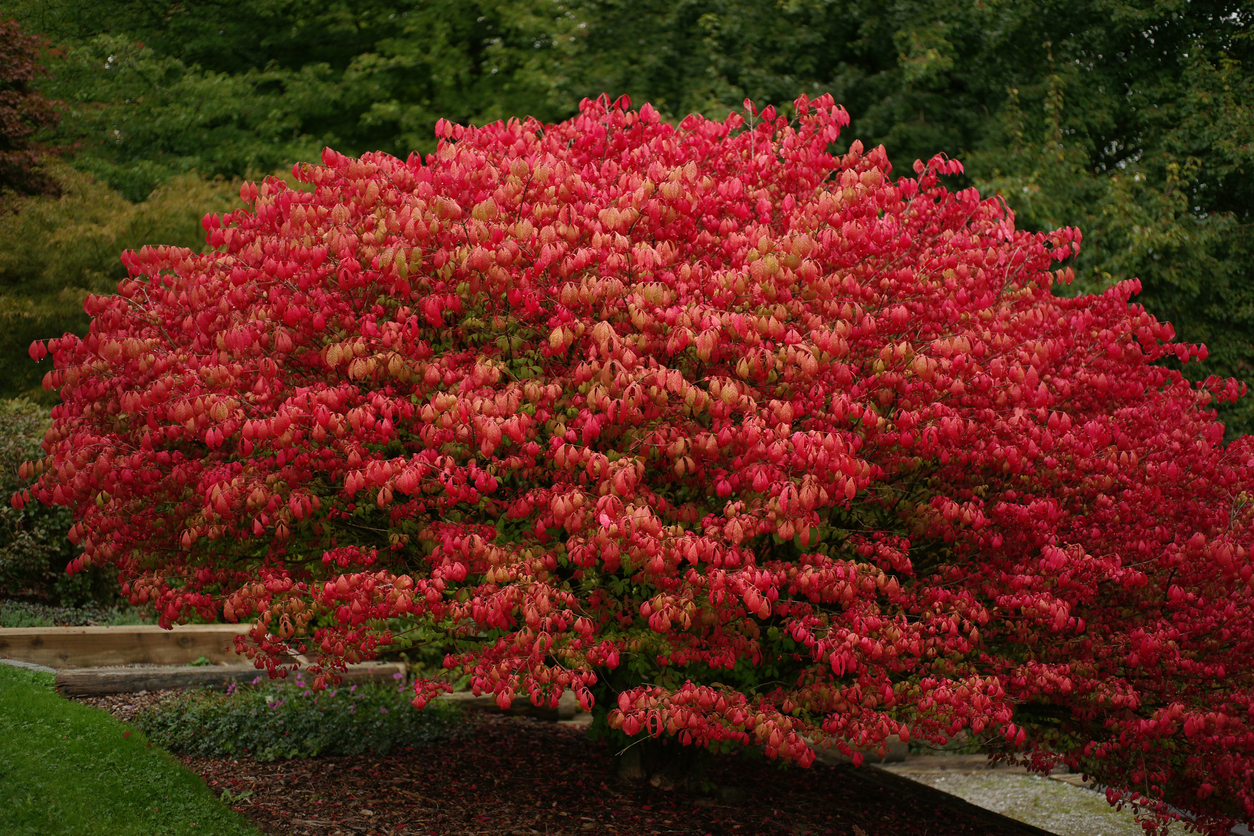
One of the most common landscape shrubs throughout the country, non-native burning bush (Euonymus alatus) is prized for its fiery red fall color and the ability to perform in both sun and shade. With the exception of wet, poorly draining soil, burning bush is tolerant of most growing conditions, which is its biggest strength when it comes to edging out competition in natural areas beyond the cultivated landscape.
Take heed, however: Nearly all parts of the bush, its sap, and its seeds are toxic if eaten in large quantities, especially to children. Burning bush develops small fruits favored by birds in autumn who deposit the seeds along their flight path.
2. English Ivy (Hedera helix)
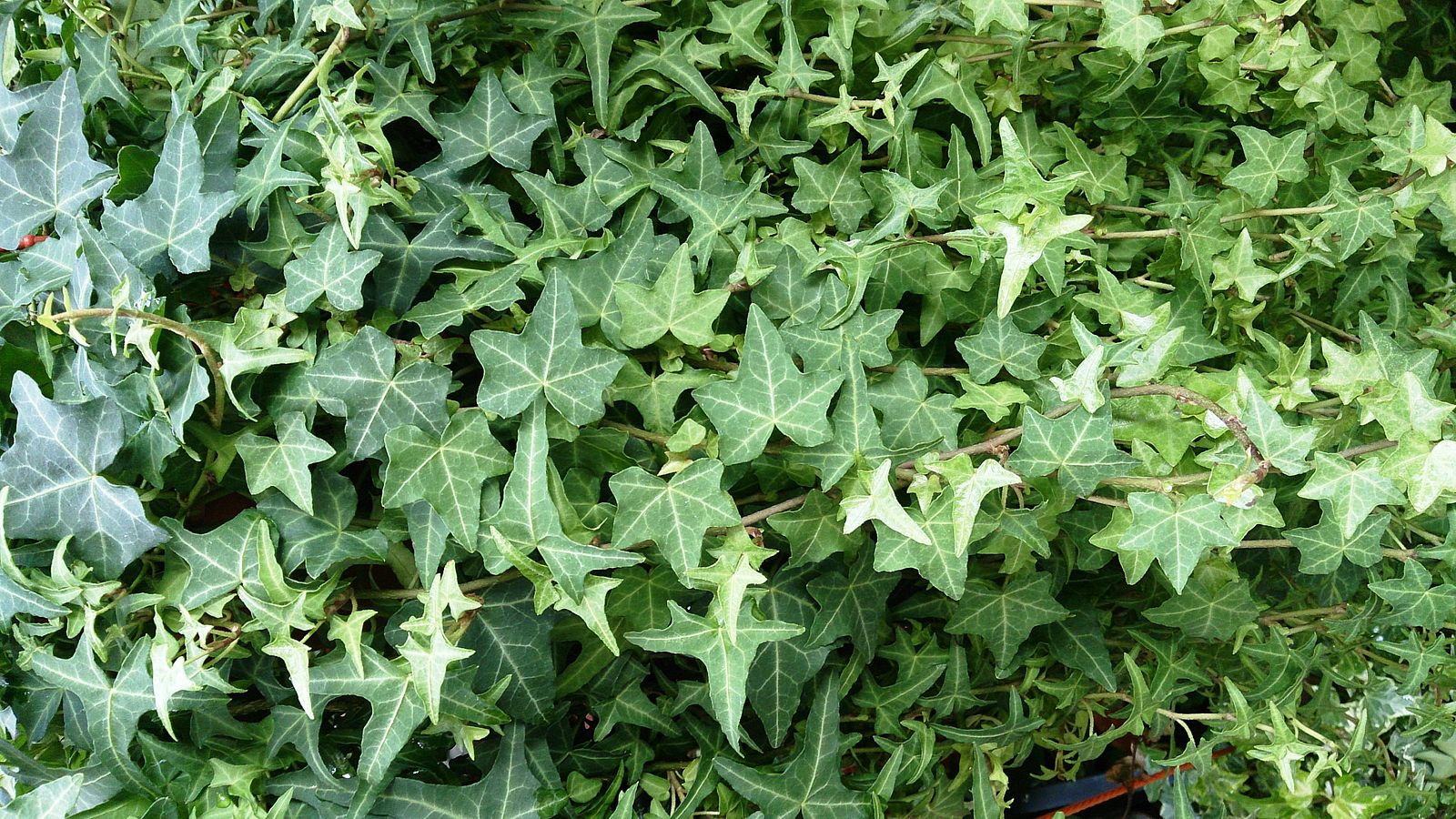
It might look pretty scrambling up a tree trunk or along a brick wall, but English ivy (Hedera helix) has an insidious way of choking out its host. The fast-spreading ground cover suppresses all other vegetation and forms a dense carpet that’s inhospitable to wildlife. When grown as a vine, it will swallow entire trees and shrubs, blocking sunlight and resulting in slow death of the host plant. If it doesn’t kill the host, the ivy’s weight can break limbs and/or weaken woody plants, making them more susceptible to disease.
Native to Europe and Western Asia, English ivy produces tiny black berries that are favored and spread by birds. Since it’s considered invasive and produces cell sap that can cause severe skin irritation, this can be a dangerous plant to add to a landscape.
RELATED: The 15 Worst Invasive Plants in America
3. Callery Pear (Pyrus calleryana)
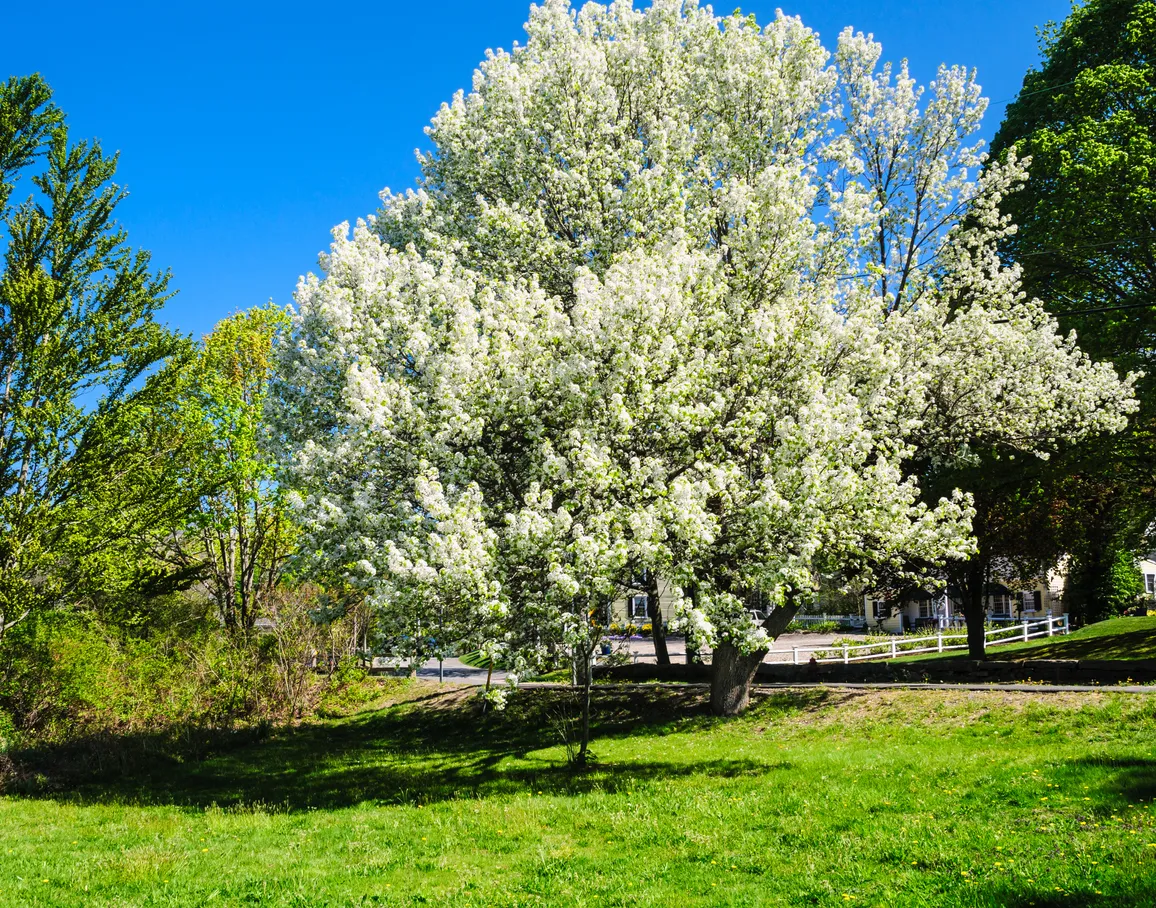
Also called Bradford pear, the Callery pear has been the go-to flowering ornamental tree in home landscapes across the country since the 1950s, often installed by home builders looking for a fast-growing, showy tree that attracts buyers. The fact that it couldn’t produce messy fruits made it more attractive. Unfortunately, new cultivars designed for better strength also can inter-breed, and the result was an invasion of fruit-producing Callery pear trees.
Considered invasive in many states, the Bradford pear has been banned in Ohio, Pennsylvania, and South Carolina. Callery pear saplings can dominate the edges of forests and open fields where they nudge out native vegetation.
RELATED: 10 Trees That Spell Trouble for Your Yard
4. Deadly Nightshade (Atropa belladonna)
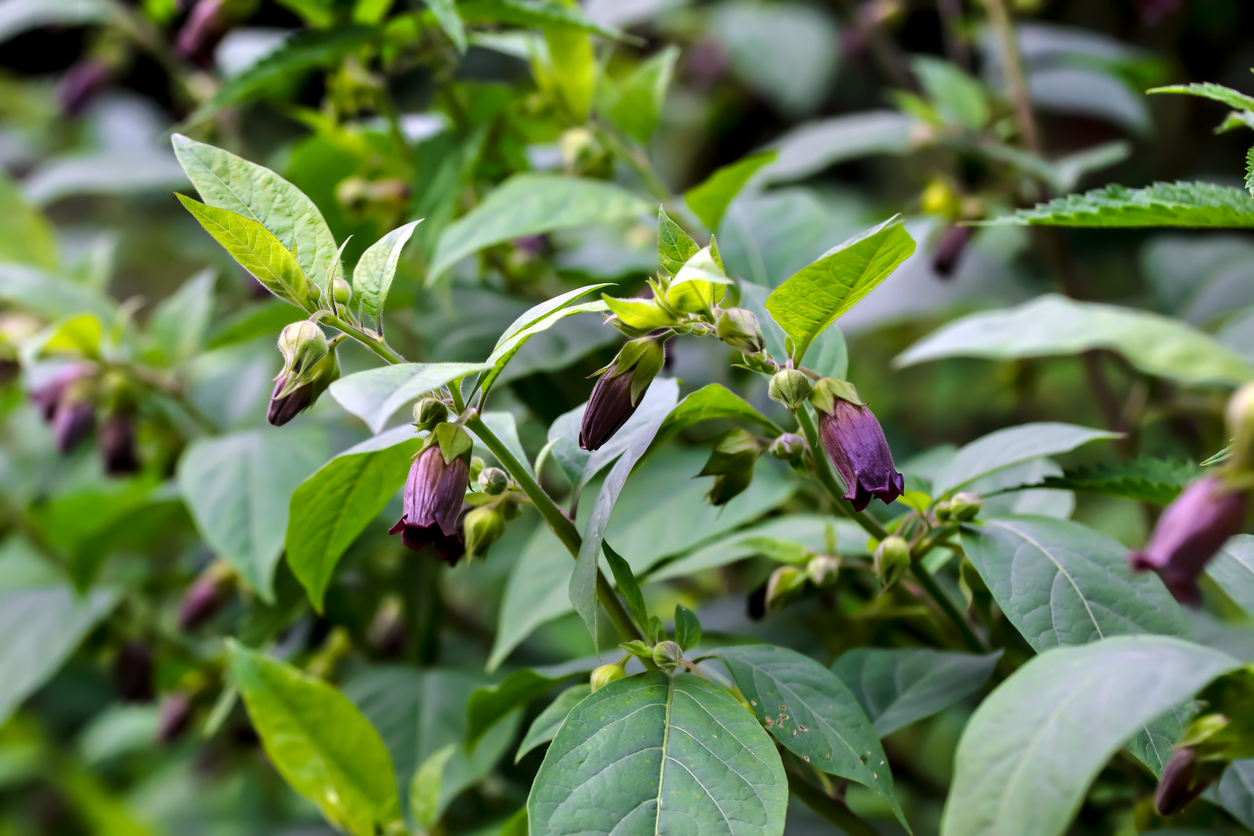
The nightshade family (Solanaceae) includes safe plants that bear delicious fruit, like tomatoes, but the family also has some bad actors, including belladonna, also known as “deadly nightshade.” Most prolific in its native England and found throughout Europe and Asia, deadly nightshade has naturalized in areas of disturbed soil of New York, Washington, Oregon, and California. This is a plant to avoid when planning a garden or when admiring or foraging plants in natural areas.
Simply touching the highly toxic plant with an open wound can be fatal, as can mistakenly eating its berries. It also is harmful to pets, but not to all birds and wildlife. Interestingly, belladonna has traditional and modern use in medical preparations, including dilating pupils and easing some stomach conditions. Of course, this is at low doses and is best left to professionals.
5. Butterfly Bush (Buddleja davidii)
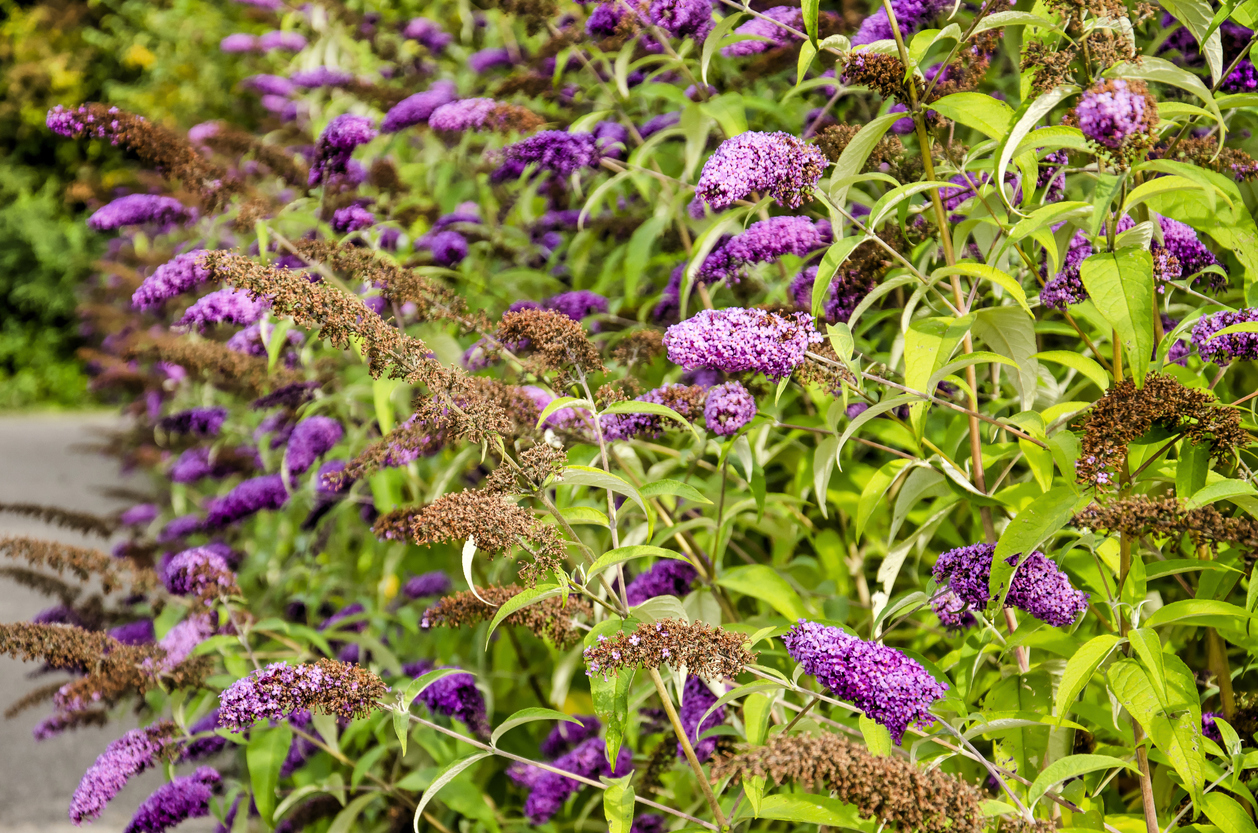
Found on many “must-have” plant lists for pollinator gardens, unfortunately the butterfly bush (Buddleja davidii) isn’t host to any caterpillars in the United States. Many butterfly bushes have dust-like seeds that float easily on the wind, landing in fields and along roadsides where they can crowd out beneficial plants. Some varieties are so invasive that many states on the east and west coasts have declared the butterfly bush a noxious weed.
Breeders have come up with sterile types that are not likely to invade, and some of the natives grow well, especially in dry climates. So, certain butterfly bushes are dangerous in particular environments only.
RELATED: The 14 Best Shrubs for the Front of the House
6. Daffodils (Narcissus spp.)
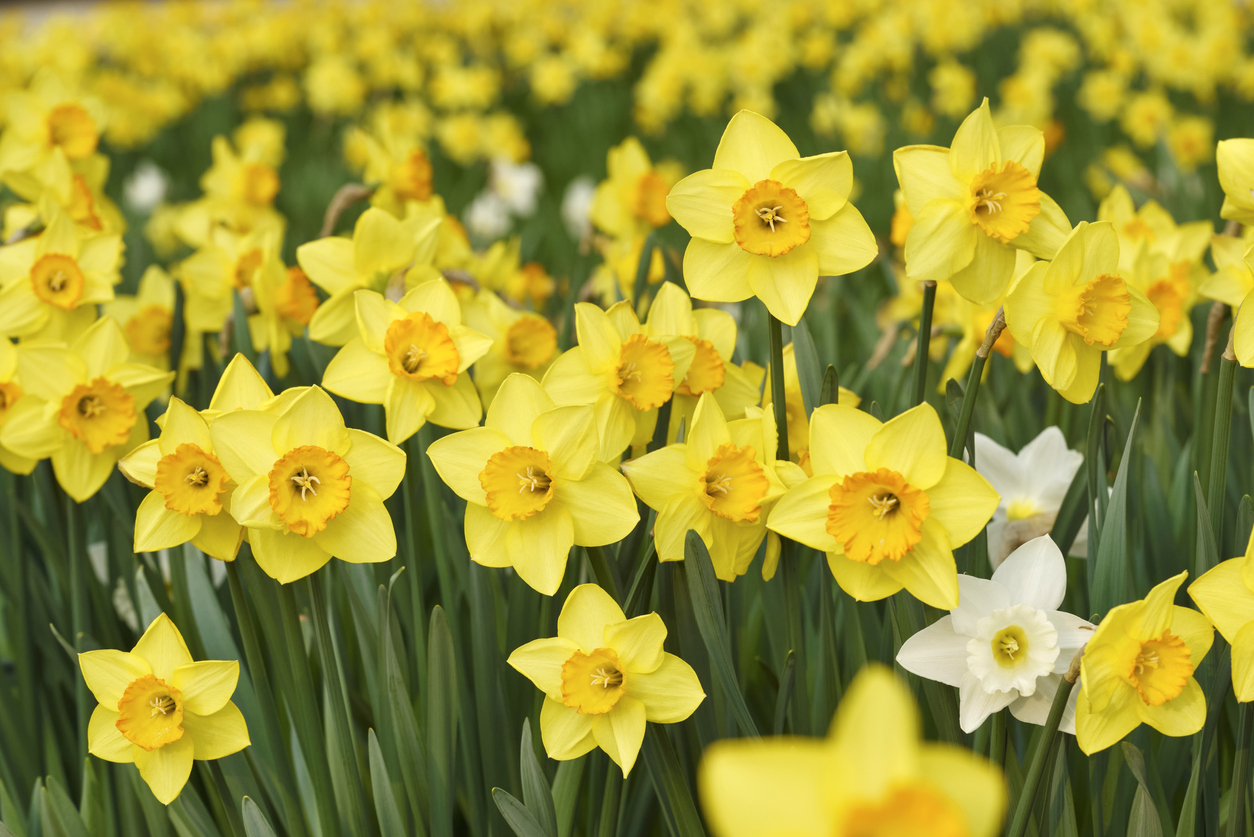
Harbingers of spring, daffodils adorn landscapes across the country. Pet lovers should be concerned, however, especially those who have a dog that likes to dig or a cat that enjoys sampling the flora. While the toxin is predominantly in the bulbs, all parts of daffodils are poisonous to people and pets. They can cause gastrointestinal issues, excessive drooling, and in the worst cases, convulsions and heart problems.
RELATED: These Popular Plants Might Actually Be Bad for Your Garden
7. Angel’s Trumpet (Brugmansia spp.)
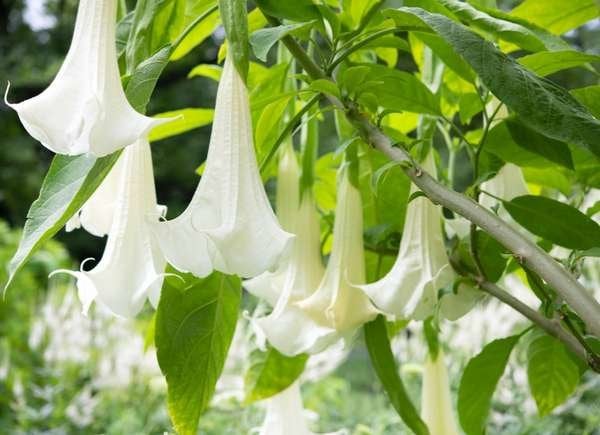
Don’t let the heavenly name fool you: All parts of angel’s trumpet, or Brugmansia, are poisonous to people and animals. Native to South America, this large shrub is commonly grown in containers in cooler climates and prized for highly fragrant, sometimes 20-inch-long flowers that are a favorite of hummingbirds. While ingestion of any part is dangerous, accidental poisoning also can occur when plant sap enters the bloodstream, such as when gardeners who’ve handled the plant then rub their eyes or eat after handling it. If you must grow angel’s trumpet, wear gardening gloves when pruning it and be diligent about cleaning up fallen leaves.
8. Trumpet Vine (Campsis radicans)
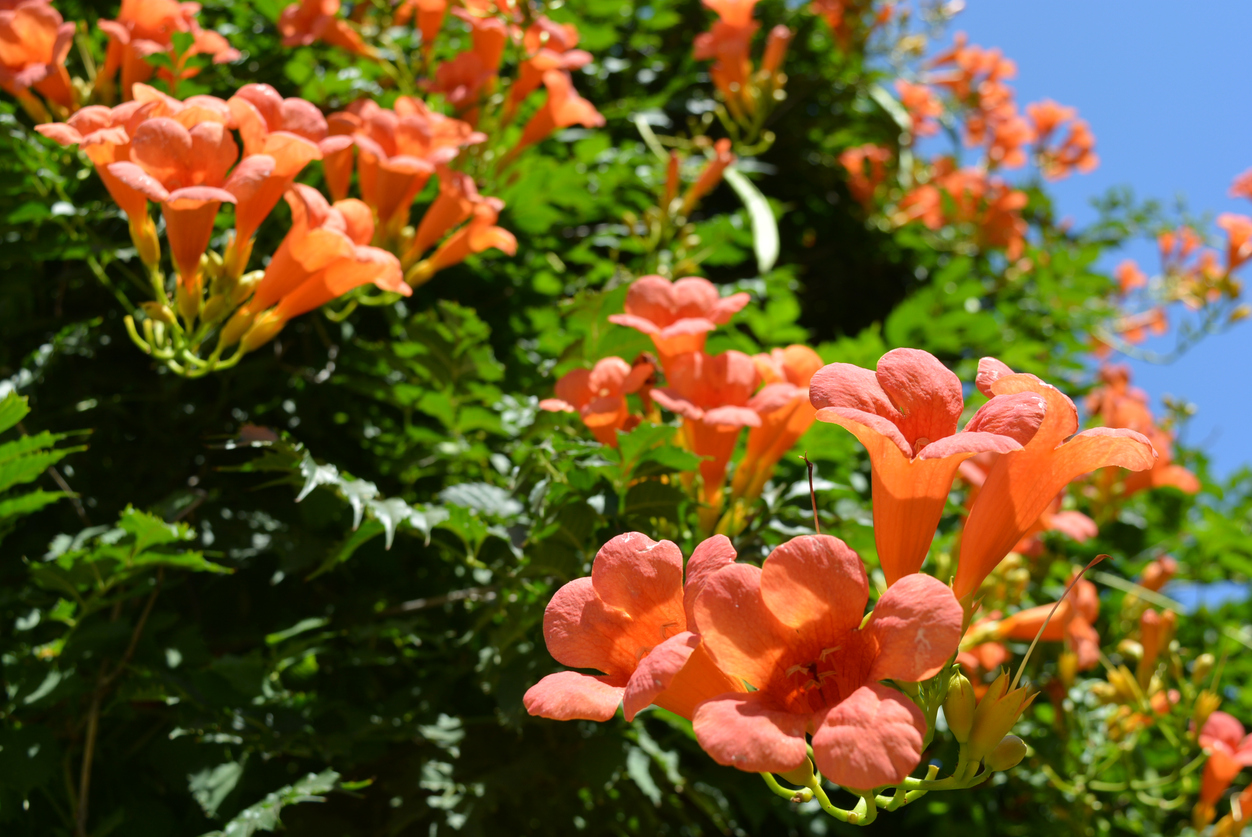
A hummingbird magnet, trumpet vine is an aggressive woody perennial vine. Given plenty of warmth and moisture, it can take over an entire landscape in a single season. In arid climates, trumpet vine tends to be better behaved, but is best located away from foundations, sidewalks, and driveways where their roots can inflict some serious damage.
When kept in check, this potentially invasive spreader can behave. Grow trumpet vine on a strong trellis away from trees and shrubs that it could potentially strangle. You’ll want to grow it away from structures, too, because the vine also is highly flammable.
RELATED: 30 Gorgeous Plants That Attract Hummingbirds to Your Garden
9. Death Camas (Zigadenus venenosus)
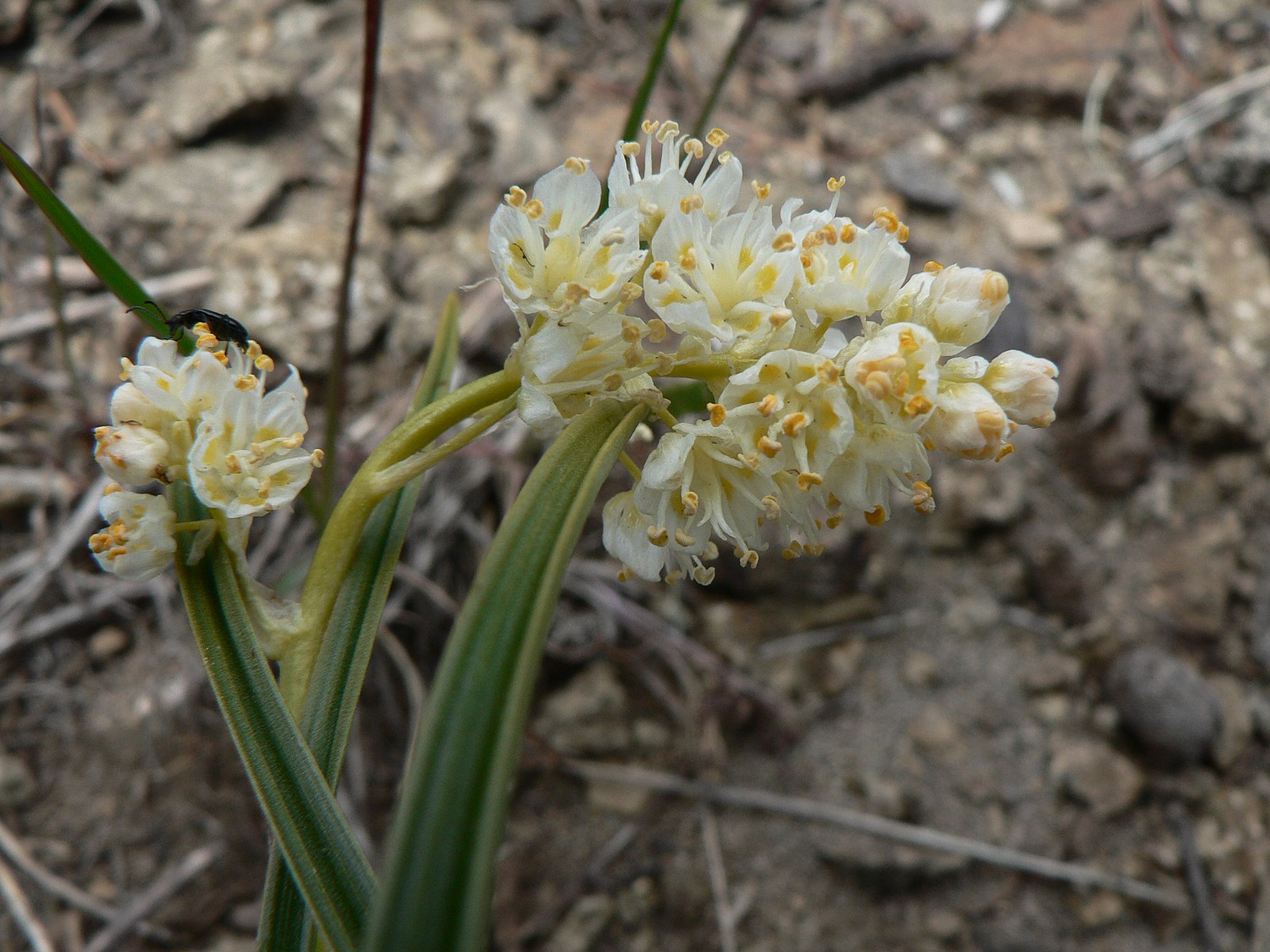
The ominous name is enough to raise a red flag: Death camas often is mistaken for wild onion. The plant is native to North America and commonly found across the Plains and western states, where it poses a risk to livestock and grazing wildlife. Among the first plants to emerge in spring, its grass-like leaves grow from a bulb resembling an onion. Small bunches of dainty six-petaled white flowers appear in late spring. All parts of the plant are poisonous.
10. Castor Bean Plant (Ricinus communis)
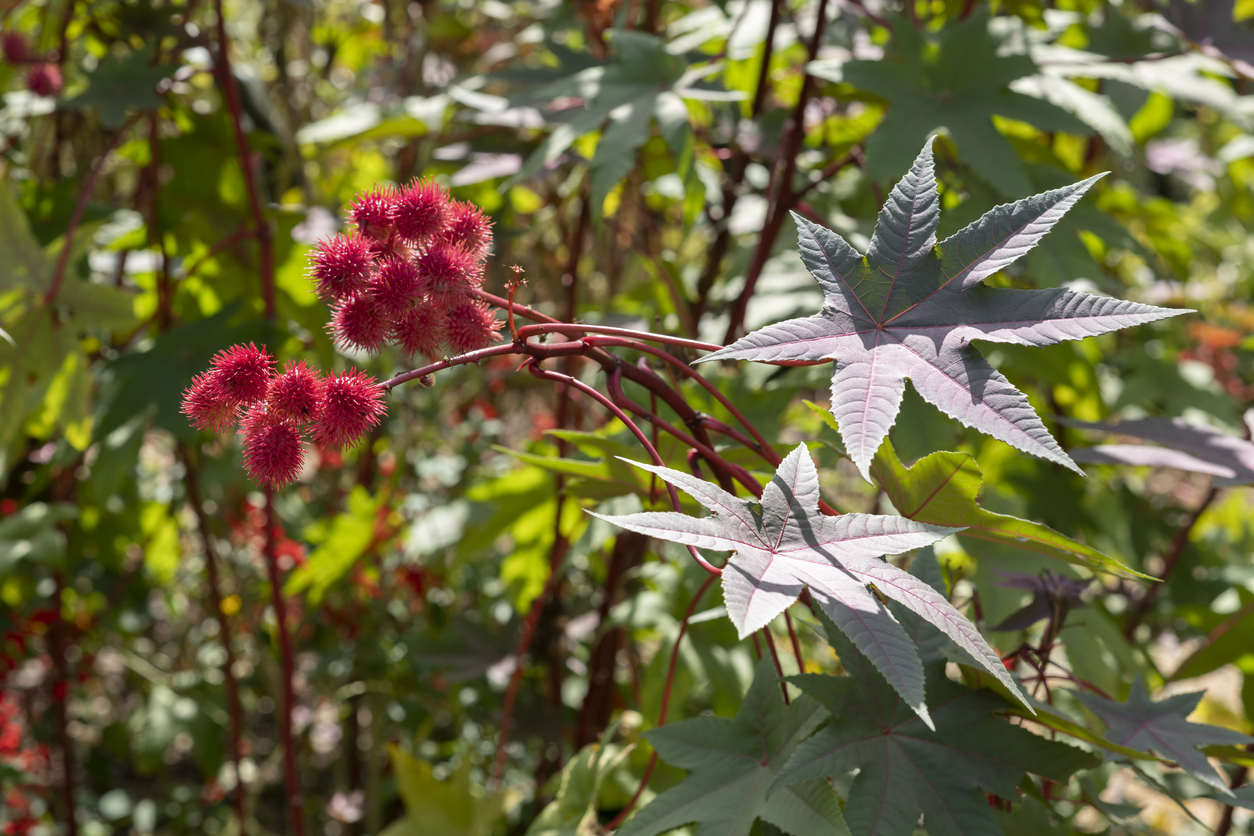
Large, star-shaped leaves of castor bean plants add an exotic flair to gardens and containers, where they can grow to heights of 6 feet or more. All parts of the plant are poisonous, especially the seeds that develop inside pretty spined capsules and explode when mature. The seeds are released as projectiles all over the garden where they may catch the interest of curious pets and small children (and sprout invasive new plants, if you’re in a frost-free zone). To prevent unintended spread and accidental ingestion, remove castor bean seed capsules when they appear, and keep children away from the plant.
11. Water Hemlock (Cicuta douglasii or C. maculata L. var. californica)
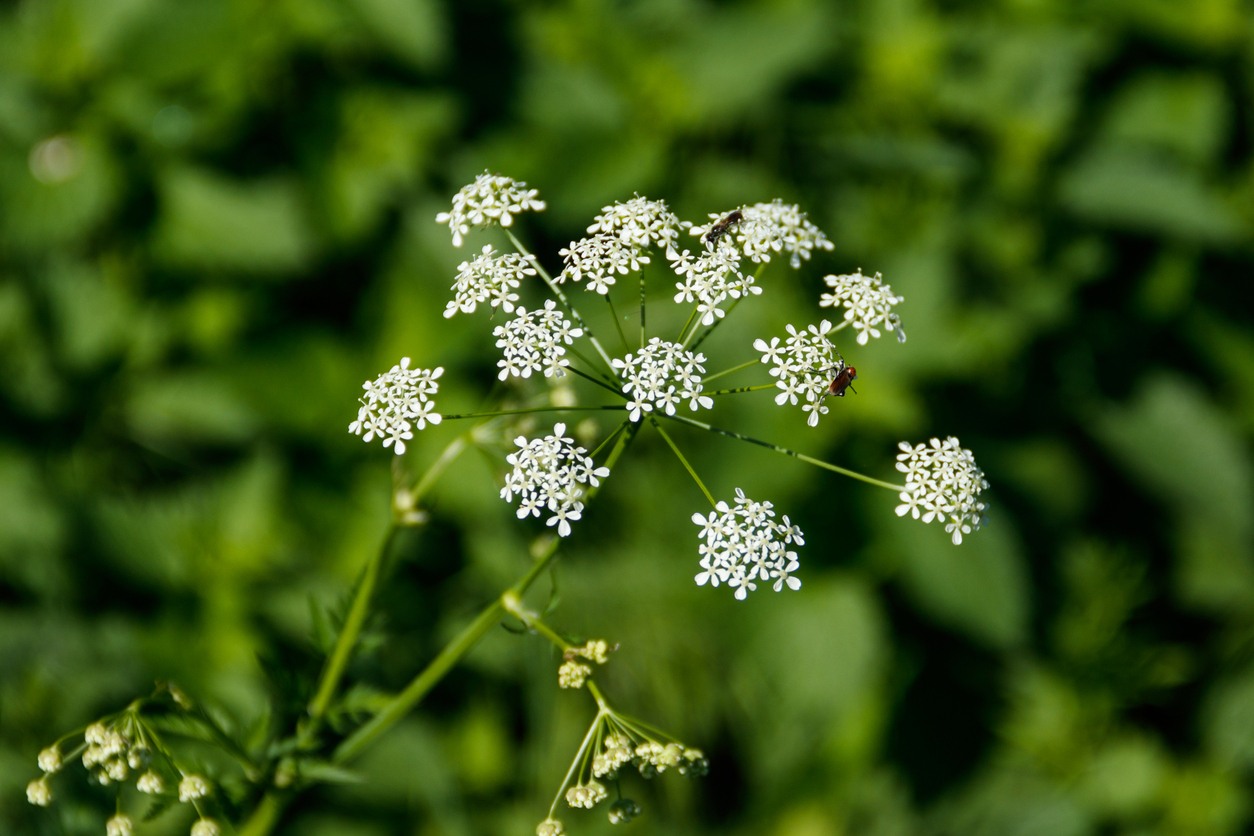
This relative of the spotted hemlock that took down Socrates is deadly to both people and livestock. The plant can be mistaken for Queen Anne’s lace, an attractive florist staple, so beware of plants with delicate white caps of flowers growing along streams, bogs, or ditches. Cicuta douglasii is the western version, growing in wetter northwestern climates. C. maculata grows throughout North America.
Alkaloids in the plant can kill livestock within a few hours of ingestion, and can be fatal to people in a little as 15 minutes. Its roots are even more poisonous than the above-ground parts of the deadly plant. Avoid this plant at all costs and don’t confuse it with florals or edibles like wild parsnip or celery, which have a similar appearance.
12. Foxglove (Digitalis purpurea)
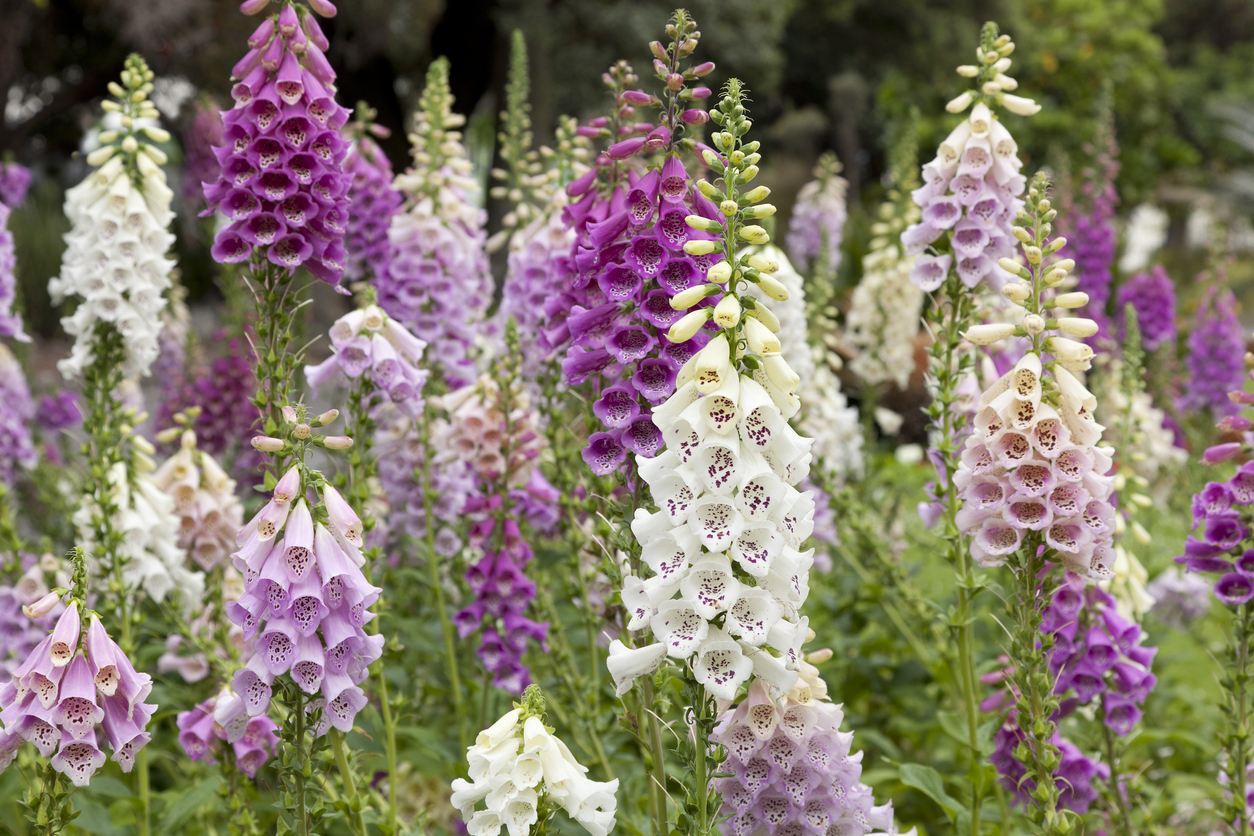
A stunning ornamental plant, common foxglove grows tall and full of bell-shaped flowers. However, it has spread from gardens to natural roadsides and is considered invasive in some areas, mostly along the east and west coasts. It’s a dangerous plant that also saves lives—in medical preparations, digitalis can be used to treat heart failure.
However, anyone who eats any portion of the plant or makes tea from the leaves is taking a big risk. The compounds in the plant can slow the heart or cause an irregular beat and lead to life-threatening effects. Don’t try to make your own heart medicine, and keep this pretty biennial away from children.
RELATED: 11 Florals That Will Give Your Garden an English Cottage Feel
13. Black Walnut (Juglans nigra)
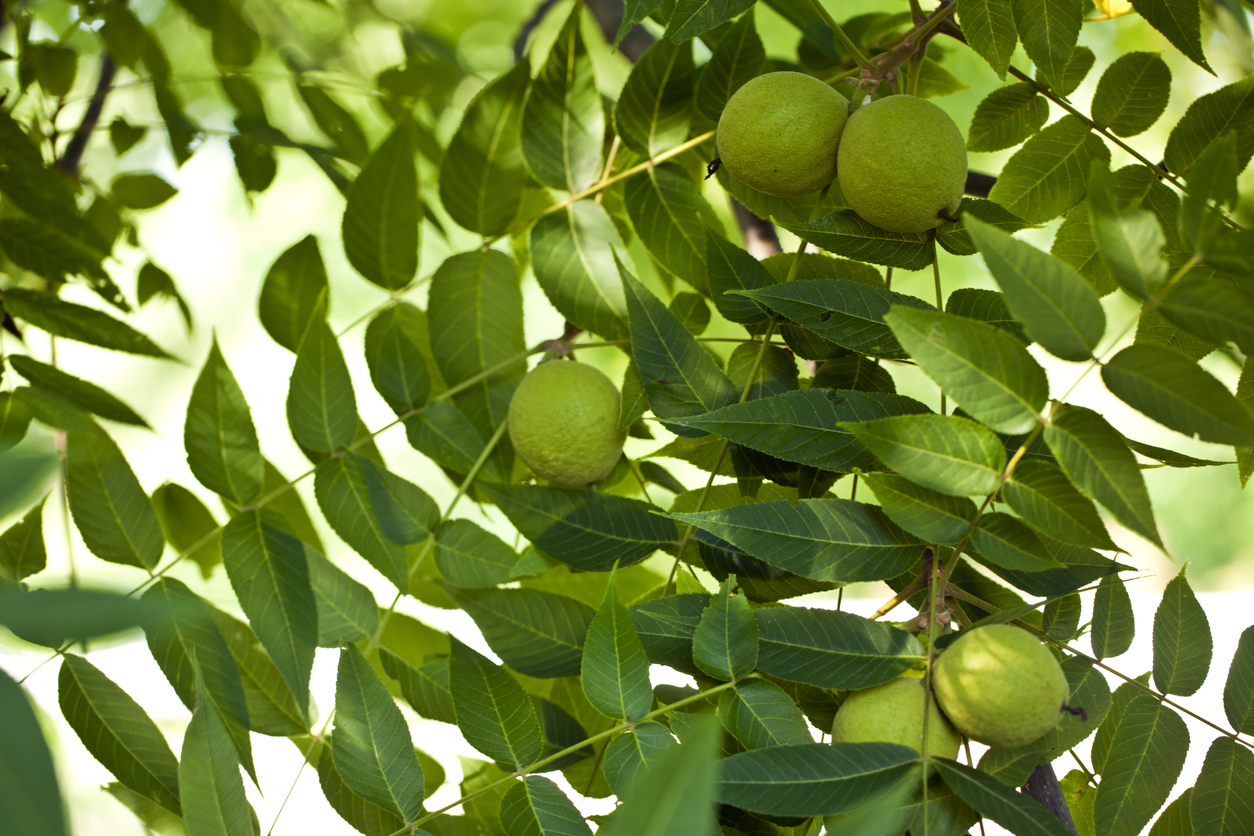
Far from poisonous to people, the Black Walnut tree produces delicious nuts to use in baked goods and other recipes. However, gardeners have been warned for years that the tree produces a toxic substance, juglone, underground within the tree’s drip line that can harm other plants trying to grow nearby. Tomatoes, peppers, and potatoes are said to be particularly vulnerable to juglone’s effects, as are lilacs, peonies, and azaleas, but research on the tree’s harm varies.
Missouri’s official state tree provides nuts for people, mice, and squirrels, is a host to some moths, and provides shade and spring flowers. The trick to keeping the black walnut from harming other plants is to avoid planting anything other than inedible, shade-loving plants within the area under the tree’s canopy.
14. Oleander (Nerium oleander)
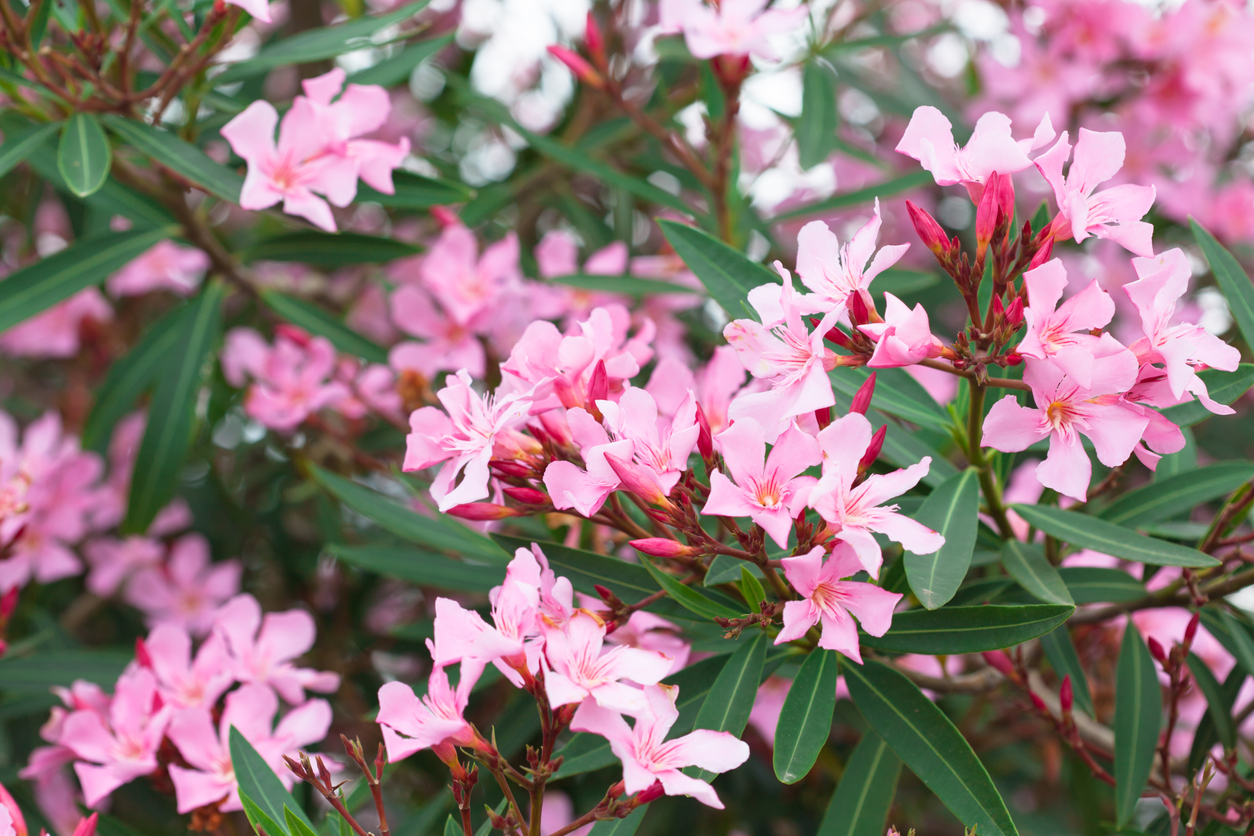
A heat-loving shrub that handles heavy pruning and blooms prolifically in summer, oleander is a popular plant in warm climates (USDA Zones 9 and 10), where it is evergreen. The attractive shrub can tolerate some drought, but two toxic compounds are found throughout the plant. Eating even a small amount of leaves or any other part of the plant can cause severe illness or death, beginning with nausea, vomiting, and abnormalities in heart function.
People who burn cut oleander branches have even reacted severely to the smoke they generated, and some livestock have become ill from eating plant parts. Oleander sap also can cause skin irritation. Still, oleander is a favorite flowering hedge or specimen plant throughout the United States, but one gardeners should grow with cautions about touching the sap and keeping kids and pets away.
